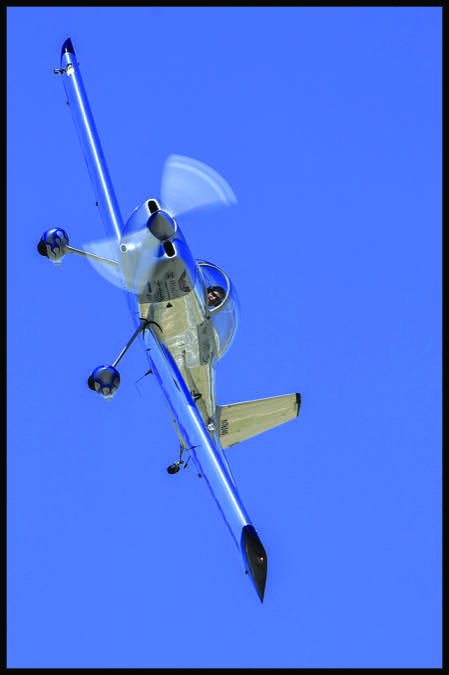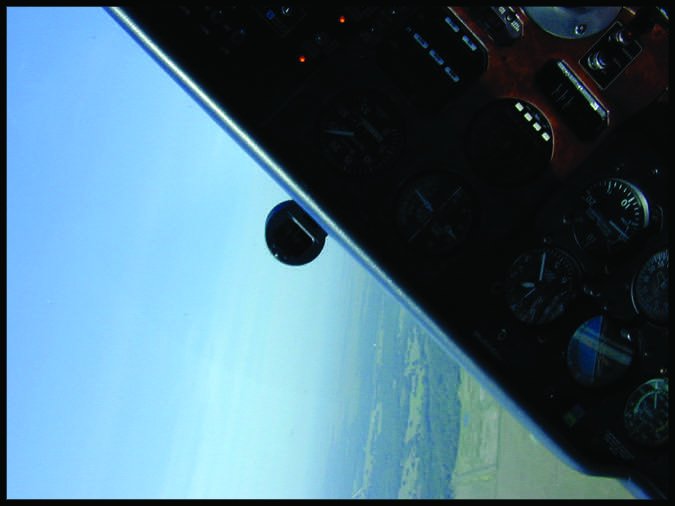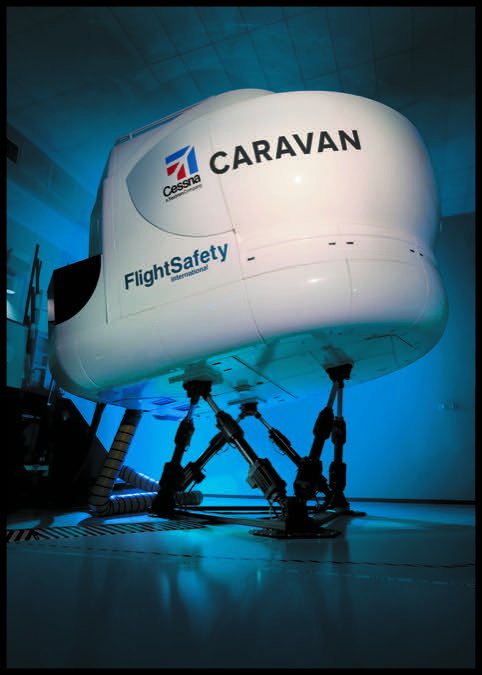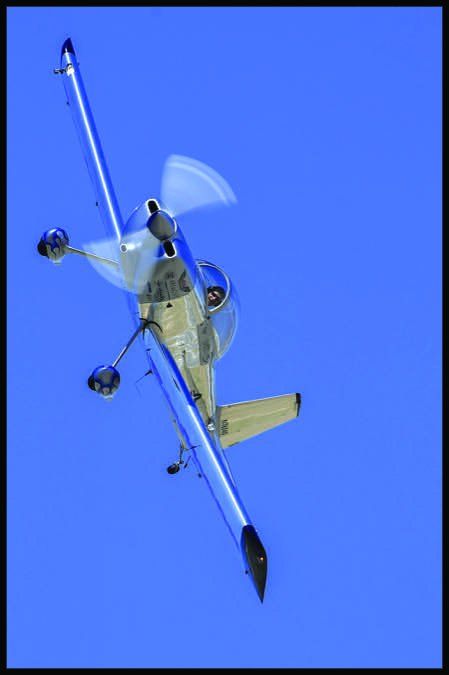Unusual attitude recovery is a standard part of the FAA checkride for nearly every rating, plus flight reviews and instrument proficiency checks. Pilots dutifully don a hood, put their heads down as an instructor or examiner puts the airplane through a few gyrations and then says, “You’ve got it.” The pilot looks up to see that the airplane is either in a nose-low or nose-high bank and usually makes a power change to help control speed, levels the wings and returns the nose to the horizon before something breaks. A check is placed in the unusual attitudes box and the pilot and instructor move on to other tasks.

Unfortunately, every year a few of the pilots who went through that drill within the preceding 24 months lose control of their airplanes in flight. They either tear the wings off in a diving spiral, hit the ground in a diving spiral before the wings come off, stall and fail to return to controlled flight before hitting the ground. Otherwise, they demonstrate they cannot return the airplane to controlled flight prior to ground impact following an autopilot malfunction, flight control system malfunction or upset due to environmental factors. With loss of control one of the biggest single causes of accidents, it seems to me that it’s time to beef up unusual attitude training into something that might help pilots help themselves when the airplane is doing something weird and the overwhelming thought in the pilot’s head is all “OhmigawdI’mgonnadieandit’sgonnahurt.” I think it’s time for unusual attitude recovery training to morph into loss-of-control (LOC) recovery training at all levels of initial and recurrent training.
Just a Different Name?
Definitions are important—loss-of-control recovery training is more than the unusual attitude recovery training I just described for several reasons. While it encompasses unusual attitude recovery, it also includes ground training in recognizing the in-flight circumstances that put a pilot at high risk of loss of control.
These circumstances include: low altitude and low energy; distraction/fixation when in IMC; mistakes in programming automation; environmental factors such as ice, turbulence and wind shear; and malfunction/failure of automation or control/trim systems. Real LOC recovery training teaches that because loss-of-control events come from a diverse set of causes, they cannot be solved by a single set of procedures. Solutions to true LOC require pilot ingenuity and skill when facing rare or unique situations. It also teaches that when the real thing happens, there is a period in which the pilot is “startled” (I think that’s much too tame a word for what the pilot feels when things start going south rapidly) and how to work through the startle. The concepts of “measured response” and “alternate control strategy” need to be taught.
Finally, a LOC event may be accompanied by a change in the flying characteristics of the airplane. Unusual attitude recovery scenario training almost invariably stops when the pilot gets the airplane back to level flight—LOC recovery training goes further because strategies may have to be developed to allow the pilot to keep the airplane in level flight and then maneuver it to a landing.
New Concepts
What makes for good LOC recovery training that can be conducted in a reasonable amount of time and reviewed during recurrent training without cutting out other important material? On the ground, LOC discussions can be worked into sections on aerodynamics and weight and balance—to enhance a pilot’s understanding of the why of LOC and increased risk at higher altitudes, higher weights and aft c.g. locations.
It’s also a good place to introduce the concept that full control deflection may be required to recover from a LOC event, and why. It’s a good time to discuss the concept that to recover from a stall, the angle of attack has to be reduced and that it’s okay to lose some altitude to do so—trying to power out of a stall is not always successful, especially at higher altitudes where available power is reduced.
Risk factors for LOC and how to be alert for increased risk should be covered on the ground. Any time the airplane is in a state of low energy at low altitude—shortly after takeoff or in the pattern—a pilot should be aware that a system malfunction, distraction, focus on one item to the detriment of others, wind shear, turbulence or immediate traffic conflict can result in an inadvertent stall in a remarkably short period of time. Techniques for reducing the risk—such as a sterile cockpit rule, use of an angle of attack indicator, trimming for appropriate speeds and how to correctly program automation—should be reviewed.
Risk Factors
Programming automation is a time of remarkably increased risk in all phases of flight because of distraction and the potential that improper programming may cause the airplane to do something unexpected, which can lead to an upset or spatial disorientation and loss of control once the pilot shuts off the automation. I’ve looked at accidents that involved loss of control within moments after a pilot was given a vector for an approach and turned the wrong way because he hadn’t loaded the approach correctly into the aircraft’s automation, the airplane didn’t do what the pilot expected and he disconnected the automation while trying to sort things out. A corollary to this sort of accident involves pilots who are over-reliant on automation and get into trouble when it is not available.
I firmly believe that ground training should include a frank discussion of the startle factor. A certain percentage of pilots suffer from the macho feeling that they can handle anything and will never be surprised in flight. LOC training needs to bring out that the startle factor, particularly where the airplane does something unusual rapidly—and there may be things flying around the cockpit and the pilot may smack his or her head against the ceiling or side wall—means that no pilot is going to be cool and calm enough to evaluate accurately what is happening and why.
Measured responses have to be taught to avoid the often counterproductive tendency to react before analyzing. The hoary aviation axiom that when facing a critical situation, “the first thing to do is wind your watch,” has basis in truth. There’s a strong tendency of pilots to fixate on one indication, thereby fail to comprehend and correctly diagnose the underlying problem. The solution is to gain control of the airplane and then determine and eliminate the cause of the problem.
As pilots age, they tend to take longer to take in what they see during an instrument scan—their scan time takes longer, it takes longer to carry out tasks such as changing frequencies and they may be more likely to fixate—all of which increases the risk of the airplane entering a bank or wandering off altitude when hand flying. Awareness of the increased risk and the need to keep a scan going will help aging pilots avoid loss of control events.
The fact that full deflection of one or more of the flight controls may be necessary should be emphasized. Few pilots have put the ailerons or rudders to the stops in flight and may only have run out of elevator authority when making a full-stall landing. As an aerobatic instructor, I’ve observed that most pilots are hesitant to put the controls to the stops even when they know it is necessary, such as when learning to do an aileron roll. In addition, it should be pointed out that it may be necessary to continue an unusual control deflection once the airplane is back to level flight because of a jammed control, runaway trim that cannot be reversed or structural damage to the airplane resulting from the LOC event.
Factors Resulting In Upsets

The list of things that can interfere with recovering from an inflight upset and require a training strategy is long, but here are some highlights:
Automation
George may not be your friend. Incorrect programming may have gotten you into an LOC situation in the first place. Understanding how to overpower or disable an autopilot or trim system can be critical.
Surprise/Disbelief
Thanks to the element of surprise, our initial reaction may be delayed or inappropriate, making the situation worse. Understanding the situation and correctly applying correctives is critical. You don’t want to make it worse.
Control Inputs
It may take substantial effort to manipulate the controls effectively to respond appropriately, and the natural first response may be incorrect. Practice (and understanding) improves the likelihood of getting it right.
Which Airplane?
In order to maximize the probability that a pilot will successfully recover from a LOC event, she or he should train for it in an airplane that duplicates the handling and control response of the airplanes he or she regularly flies. If the pilot flies an airplane with a yoke, training should be in an airplane with a yoke. Most general aviation airplanes have relatively slow roll rates and require putting the ailerons to the stops to get whatever roll rate is built in. That means training in an airplane that has
a slow roll rate so that the pilot can get used to what may be hard work in recovering from a roll past the vertical with the nose dropping.
I do not advocate LOC recovery training in high-performance aerobatic aircraft for the important reason that they are way too easy to fly. Recovery from inverted flight takes no effort in them, whereas the same recovery in a different airplane takes both hands on the yoke, cranking it as far as it will go and holding it there.
In my opinion, the ideal airplanes for LOC recovery training are the Cessna 150/152 Aerobat, aerobatic Beech Musketeer and aerobatic E33C/F33C Beech Bonanza. All have control responses that are similar to the general aviation airplanes most pilots fly, including modest roll rates, and it takes work to recover from the attitudes that can be generated in an LOC upset.
Surprise needs to be built into LOC recovery training—which makes tossing something sudden at a pilot during a flight review or IPC part of the training. The instructor can have a little fun coming up with ways to startle a pilot and perhaps induce a LOC such as shouting or slapping an open palm on an interior surface while the pilot is flying the airplane a knot or two above stall. Rolling in excessive nose-up or -down trim while establishing an unusual attitude and then forbidding the pilot from resetting it once level flight is established demonstrates how hard it can be to keep an impaired airplane under control following recovery.
Avoiding rolling pullups, which put intense strain on airframes, should be emphasized. During a nose-low, steeply banked event, the pilot needs to learn to get the wings level prior to raising the nose and understand why forward pressure on the yoke may be needed as the airplane naturally seeks to slow to its trim speed.
Finally, there seems to be a shortcoming in the way recovery from a nose-high impending LOC event is taught in the piston-airplane world. Most procedures call for going to full power to delay stall onset and immediately working to force the nose down with the yoke to get back to level flight. In the jet world, pilots are taught to also enter a bank of about 45 degrees, because it may not be possible to get the nose down with the yoke (e.g., trim runaway, center of gravity shift). Entering a bank will lower the nose and help avoid a stall. Should the elevator or trim tab be jammed or cargo has shifted aft, establishing a steep turn may allow the pilot to maintain altitude at a speed above stall while fixing the problem. I believe that too often general aviation pilots focus on trying to force the nose down, wings level, in an impending nose-high LOC event and are unable to do so before stalling and losing control.
Simulators

I’m a strong proponent of simulators for LOC avoidance and recovery training. They allow numerous sequences to be set up and run in short order. In addition, some simulators can simulate control hard overs—something that is difficult to do in an airplane.
The down side is that simulators cannot simulate the G loads that a pilot may be subjected to during the upset and recovery. In order to lower the nose to avoid stalling the airplane in a nose-high LOC event, the pilot may have to go to partial or negative G, which the simulator cannot duplicate. Having loose items in the cabin float around and/or hit the pilot on the back of the head may be a reality of a successful LOC recovery, which means that it must be practiced in an airplane.
Conclusion
Teaching plain vanilla unusual attitude recovery for more than 80 years hasn’t been successful in keeping the loss of control accident rate under control. Moving to LOC avoidance and recovery training that emphasizes the why of LOC, the risk factors leading to it, avoiding it and realistic in-flight simulations and recovery is the logical next step. Besides, the training is a lot of fun.
Rick Durden is a practicing aviation attorney and type-rated ATP/CFI with more than 7800 hours.




